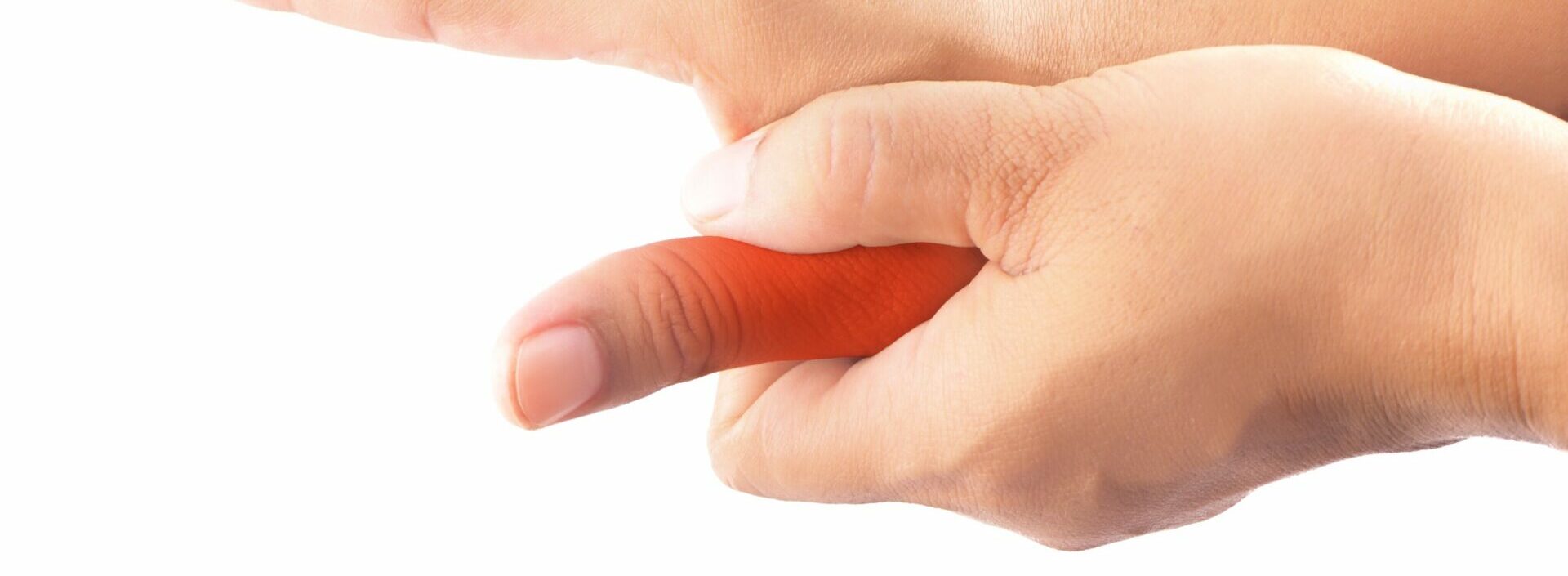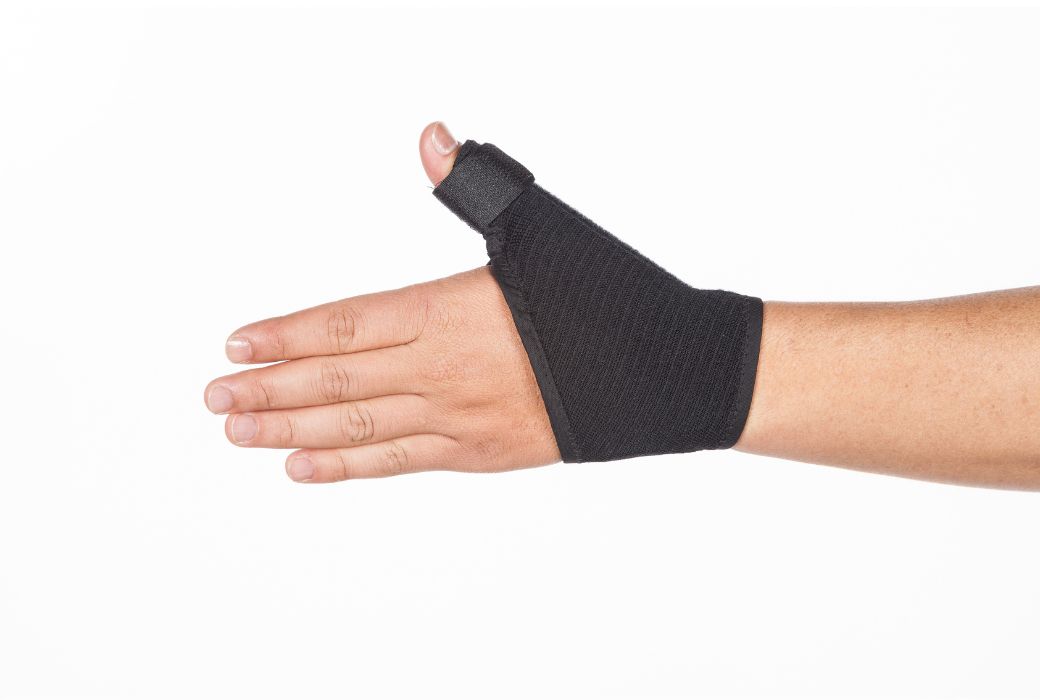Our thumbs allow our hands to be incredibly versatile. Without them, everyday tasks would become a lot more difficult. From throwing a ball to operating an intricate surgery, our thumbs are one of our most crucial assets. So, when they become injured, even the simplest activities can be hindered.
A torn ligament in your thumb can be fairly common, especially in sporting scenarios. Ligaments connect the bones, providing stability at the joint. The ulnar collateral ligament (UCL) and the radial collateral ligament (RCL) are the most commonly involved, either together or independently.
This blog will discuss the causes, symptoms, diagnostic procedures and treatment options for a torn thumb ligament.
Causes of a torn ligament in the thumb
The primary cause of a torn thumb ligament is falling onto an outstretched hand with excessive force or experiencing trauma. Ligaments become torn when they are stretched beyond their capabilities as the thumb is pushed drastically away from the rest of the hand.
Sports where this injury is most common include skiing, baseball and basketball. The severity of the injury can vary and is categorised into ‘grades’, which also influence some of the symptoms you may experience. These grades range from mild, moderate, and severe injuries.
Signs and symptoms of a torn ligament in the thumb
As mentioned earlier, your symptoms will vary based on the grade of injury sustained. Some more general symptoms might include:
- Pain and severe swelling on the innermost part of the thumb immediately after sustaining the injury.
- Pain and severe swelling at the base of the thumb immediately following or shortly after sustaining the injury.
- Weakness and instability during grasping or writing movements.
- A loss of motion when attempting to move your thumb in a circular pattern.
Grade 1, or mild sprains, tend to involve experiencing pain and swelling at the base of your thumb, but not always immediately upon injury.
Grade 2, or moderate sprains, may cause pain and swelling at the base of your thumb and a loss of function and range of movement.
Finally, Grade 3, or severe sprains, can include intense pain, loss of movement, swelling, bruising, and instability.
Diagnosing a torn ligament in the thumb
If you believe you have sprained the ligaments in your thumb, the most accurate confirmation of this will come via an ultrasound scan or MRI. A scan will compare the joint’s laxity, or how much the joint can move, through a comparison to the non-injured thumb.
Due to the ligament stretching during a sprain, the amount of laxity can indicate the degree of injury. A Grade 3 sprain will show more laxity compared to a Grade 1 sprain. A Grade 3 sprain involves a complete rupture of the ligament; therefore, there will be a lot of movement, as the ligament is no longer providing support or stability.
You may also have an X-ray to rule out a bone fracture, however, these are often normal.
Treatment for a torn ligament in the thumb
There are two routes your treatment can take: operative or non-operative treatment. For a Grade 1 sprain, at-home treatment involving rest, ice, compression and elevation (RICE) can be used. Grade 2 sprains will require more attention. Where most of the ligament is still intact, immobilisation in a plaster cast for around 6-8 weeks will be needed.
Operative treatment is needed in cases where there has been a complete rupture of the ligament. Without an operation, there is a risk that the ruptured ligament may not heal correctly if left out of place. The surgery takes roughly 30 minutes to complete. During the operation, your surgeon will move the ligament back to its original position using a bone anchor. You will then need to keep your hand protected in a plaster cast whilst it heals.
If surgery is what you need, Ladan Hajipour offers you a solution. Ladan Hajipour is a Manchester hand surgeon with over 10 years of experience in the hand and wrist field.
Risks of Torn Thumb Ligament Surgery
As with every surgery, there are risks to consider. Although factored in beforehand, it is always good to be aware of them. Some risks include:
- Infection.
- Injury to the superficial nerve, surrounding blood vessels and tendons.
- Reduced grip strength
- Scar sensitivity: Following the surgery, your scar may become over-sensitive and painful. Scar desensitisation exercises, once stitches are removed, can help with sensitivity.
- Recurrent injury: There is a risk of re-injuring your ligament after surgery due to the extensive healing process involved. This may also lead to further injuries down the line. Base of thumb arthritis can be caused due to ligament injury.
- CRPS (Chronic Pain Syndrome): A small number of people who receive surgery may develop chronic pain syndrome, experiencing permanent pain and stiffness. This can require extensive physiotherapy and pain medication.
Aftercare for a torn thumb ligament
As mentioned earlier, less severe ligament injuries should be rested, with ice and compression to help alleviate swelling and pain. For surgical matters, your hand should be kept dry and clean while the wound is healing. After 1 week, the plaster protection can be removed and replaced by a splint. Your hand therapist should supervise some movements and advise that no heavy stress should be placed on the thumb joint until at least 8 weeks.
Driving should not be attempted for 6-8 weeks post-surgery, but it can depend on which thumb is affected by the injury. Returning to work also depends on your job type. Light manual workers can return 4-6 weeks post-surgery, while heavy manual workers should not attempt to return before 8-12 weeks post-surgery.
Finally, if you are experiencing pain and tenderness around your scar, these scar desensitisation exercise tips may help:
- Use circular motion massages on the scar, from the palm towards the wrist.
- Do this 3 times a day, for 10 minutes each round.
- Rub the scar on different textured materials to improve your skin’s sensitivity.
- Submerge your hand under cold and warm water to improve temperature sensitivity
If you or anyone you know has potentially injured their thumb ligament, it is important to have it checked by a hand and wrist specialist or healthcare professional. To speak with one of our professionals, contact us to book your appointment today.



